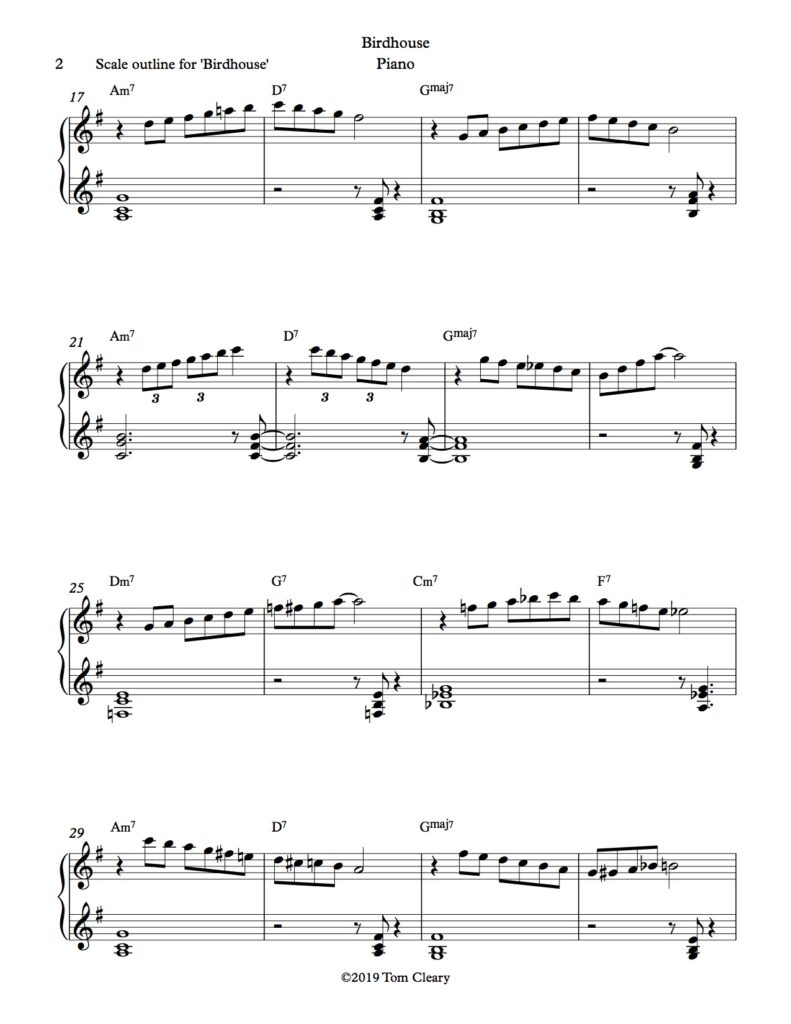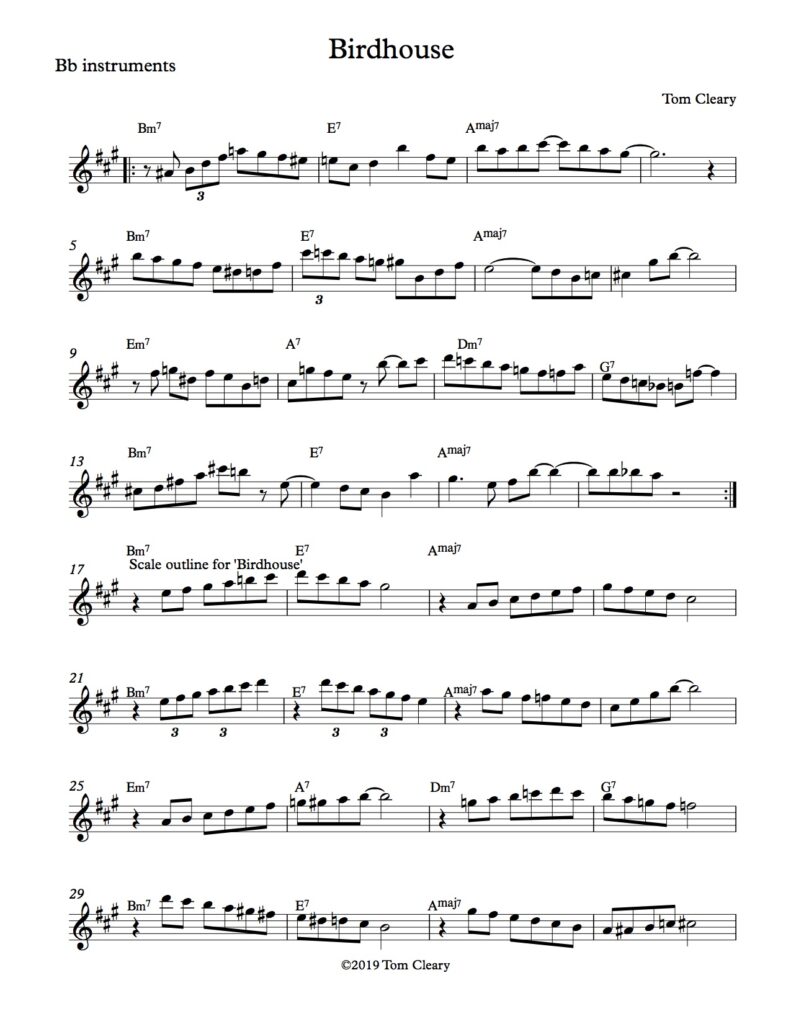My tune ‘Birdhouse’ (click on the title to hear a recording by my quartet Birdcode) is based on the chord changes of Sonny Rollins’ ‘Pent-Up House’ and is inspired by melodic language from a particular group of tunes and players associated with Charlie Parker. (In addition to the original recording of Rollins’ tune, which can be heard at the link in the previous sentence, interesting versions of ‘Pent-Up House’ have also been recorded by vocalist Sheila Jordan, pianist Hank Jones and trumpeter Chet Baker.) It might have been more accurate to call my tune ‘Bud’s House’, as this group of tunes and players, who I discuss in another post, was associated even more closely with Bud Powell. ‘Birdhouse’, however, has other useful resonances beyond the immortal nicknames of jazz history. As the operator of two backyard birdfeeders, I enjoy watching the arrivals and departures of my avian visitors, and I consider them fellow musicians. The podcast Birdnote has pointed out that robins, for instance, think like jazz players when they sing, creating longer songs from a large vocabulary of short phrases. ‘Birdhouse’ draws on this tradition of composition which the human musical community and the natural world have in common.
The charts below represent the initial 16 bar theme that is heard at the beginning of the recording by my quartet Birdcode (hear it clicking on the title above) played in unison by my left hand, bassist John Rivers and vocalist Amber deLaurentis. On the recording, this is followed by a section in the style of Bach’s two-part inventions or Charlie Parker heads like ‘Chasin’ the Bird’, where the first theme is repeated by my left hand and joined by a second theme, played by my right hand and also sung by Amber. In my imaginary music video for the tune, this section might be accompanied by footage of wonderful moments like this one where two birds arrive at different levels on the same feeder. The head out might be described as the same two birds returning to the feeder but switching levels: the second theme is played first by the left hand and vocal and is then joined by the first theme.
The charts below skip all the contrapuntal activity and focus on the first theme, which could be performed on its own as a head in and head out with improvised solos in between. I’ve included a written scale outline which can be used as the basis for soloing. Keep in mind that the challenge of a written scale outline is that each scale needs to be plundered for ideas, like a collection of Scrabble letters, not played literally as the notation seems to imply. The written scale outline that follows the tune models a way in which improvisers can hear a chord change (or a region of a chord progression) as a harmonic ‘question’ which they can listen for and then respond to (starting around beat two of a chord change) with a melodic ‘answer’. (The solos of the pianist Wynton Kelly, such as those on ‘Freddie Freeloader’ and his own versions of ‘Green Dolphin Street’ and ‘Do Nothin ‘Til You Hear From Me’ are full of examples of this kind of improvisational dialogue, with his left hand as the inquisitor and his right hand as the respondent.) Another scale outline I created for the tune, which uses scales starting on the downbeat, can be heard here (following a statement of the Sonny Rollins tune.) 



